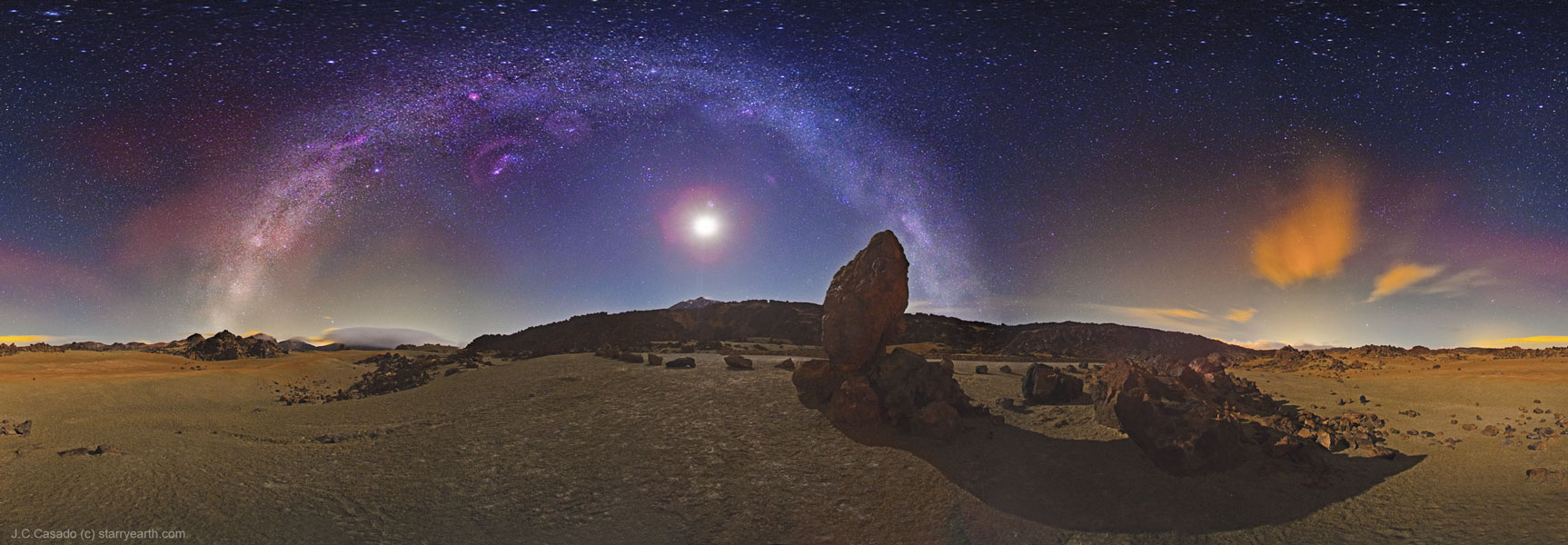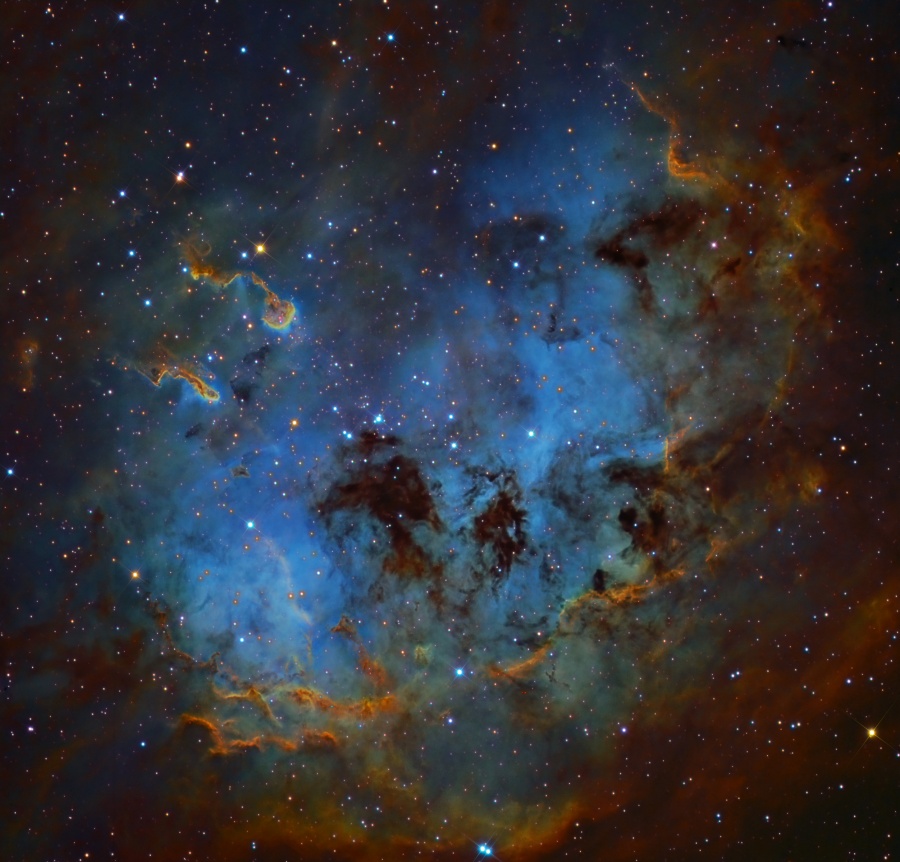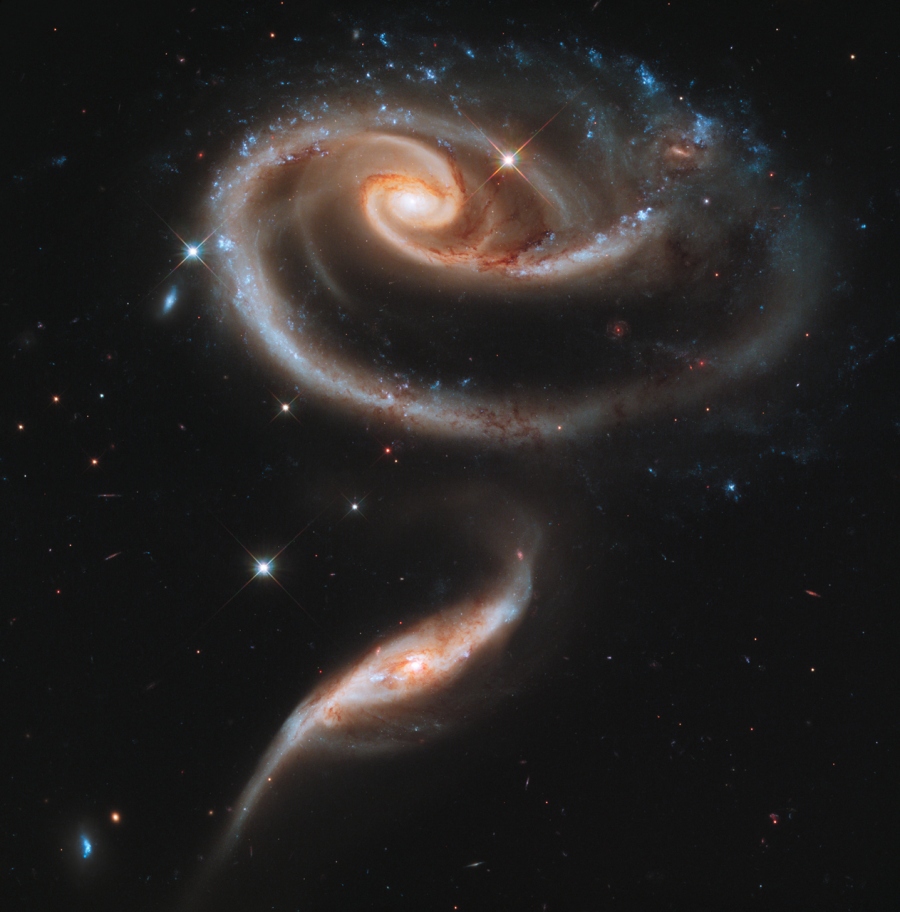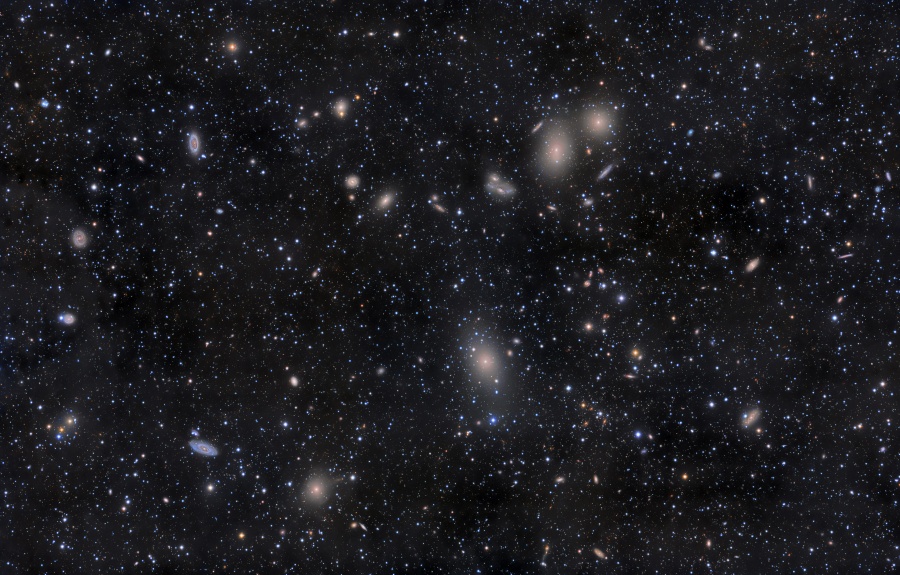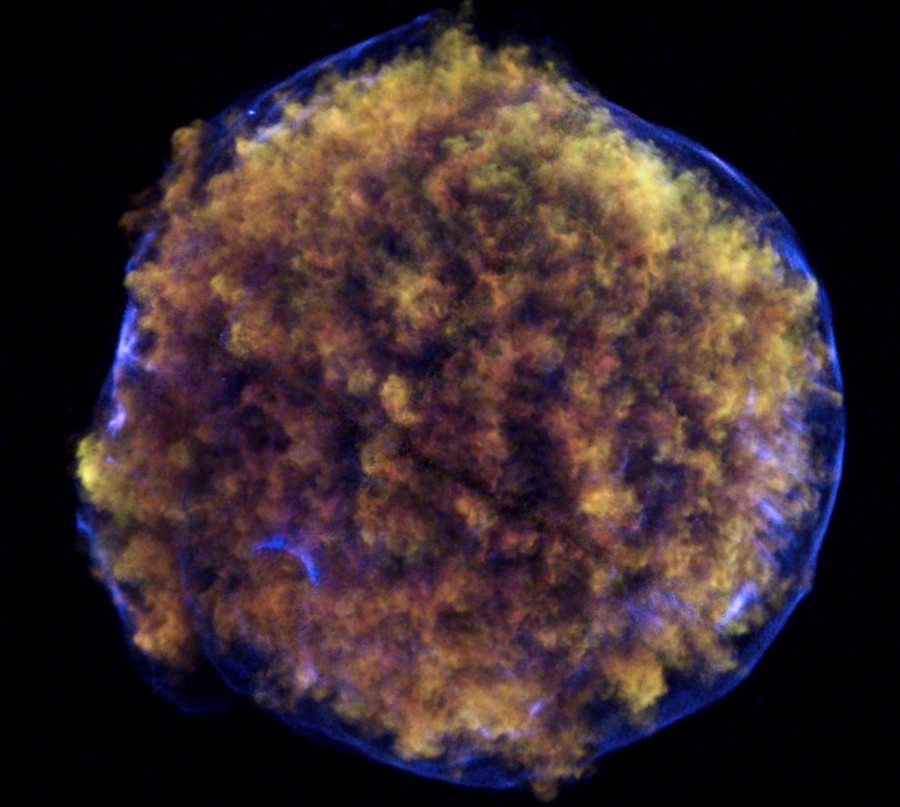Please vote for the two best APODs (image and text) for April. All titles are clickable and link to the original APOD page.
We ask for your help in choosing an APOM, as this helps Jerry and Robert create "year in APOD images" review lectures and a free PDF calendar at year's end, and provides feedback on which images and APODs were relatively well received.
We are very interested to know why you selected the APODs for which you voted; if you would like to tell us, please reply to this thread. Thank you!
Thank you!
_____________________________________________________________________
<- Previous month's poll
Over 400,000 light years across NGC 6872 is an enormous spiral galaxy, at least 4 times the size of our own, very large, Milky Way. About 200 million light-years distant, toward the southern constellation Pavo, the Peacock, the remarkable galaxy's stretched out shape is due to its ongoing gravitational interaction, likely leading to an eventual merger, with the nearby smaller galaxy IC 4970. IC 4970 is seen just below and right of the giant galaxy's core in this cosmic color portrait from the 8 meter Gemini South telescope in Chile. The idea to image this titanic galaxy collision comes from a winning contest essay submitted last year to the Gemini Observatory by the Sydney Girls High School Astronomy Club. In addition to inspirational aspects and aesthetics, club members argued that a color image would be more than just a pretty picture. In their winning essay they noted that "If enough colour data is obtained in the image it may reveal easily accessible information about the different populations of stars, star formation, relative rate of star formation due to the interaction, and the extent of dust and gas present in these galaxies". (Editor's note: For Australian schools, 2011 contest information is here.) Have you ever seen the band of our Milky Way Galaxy? Chances are you have never seen it like this -- nor could you. In a clear sky from a dark location at the right time, a faint band of light is visible across the sky. This band is the disk of our spiral galaxy. Since we are inside this disk, the band appears to encircle the Earth. The above spectacular picture of the Milky Way arch, however, goes where the unaided eye cannot. The image is actually a deep digital fusion of nine photos that create a panorama fully 360 across. Taken recently in Teide National Park in Tenerife, Canary Islands, Spain, the image includes the Teide volcano, visible near the image center, behind a volcanic landscape that includes many large rocks. Far behind these Earthly structures are many sky wonders that are visible to the unaided eye, such as the band of the Milky Way, the bright waxing Moon inside the arch, and the Pleiades open star cluster (can you find it?). The deep exposure also brings out many sky wonders normally beyond human perception, many of which are labelled on the annotated image version, including Barnard's Loop, visible above as the half red ring below the Milky Way band. This telescopic close-up shows off the otherwise faint emission nebula IC 410 in striking false-colors. It also features two remarkable inhabitants of the cosmic pond of gas and dust above and left of center, the tadpoles of IC 410. The picture is a composite of images taken through both broad and narrow band filters. The narrow band data traces atoms in the nebula, with emission from sulfur atoms in red, hydrogen atoms in green, and oxygen in blue. Partly obscured by foreground dust, the nebula itself surrounds NGC 1893, a young galactic cluster of stars that energizes the glowing gas. Composed of denser cooler gas and dust the tadpoles are around 10 light-years long, potentially sites of ongoing star formation. Sculpted by wind and radiation from the cluster stars, their tails trail away from the cluster's central region. IC 410 lies some 12,000 light-years away, toward the constellation Auriga. The spiky stars in the foreground of this sharp cosmic portrait are well within our own Milky Way Galaxy. The two eye-catching galaxies lie far beyond the Milky Way, at a distance of over 300 million light-years. Their distorted appearance is due to gravitational tides as the pair engage in close encounters. Cataloged as Arp 273 (also as UGC 1810), the galaxies do look peculiar, but interacting galaxies are now understood to be common in the universe. In fact, the nearby large spiral Andromeda Galaxy is known to be some 2 million light-years away and approaching the Milky Way. Arp 273 may offer an analog of their far future encounter. Repeated galaxy encounters on a cosmic timescale can ultimately result in a merger into a single galaxy of stars. From our perspective, the bright cores of the Arp 273 galaxies are separated by only a little over 100,000 light-years. The release of this stunning vista celebrates the 21st anniversary of the Hubble Space Telescope in orbit. Well over a thousand galaxies are known members of the Virgo Cluster, the closest large cluster of galaxies to our own local group. In fact, the galaxy cluster is difficult to appreciate all at once because it covers such a large area on the sky. Spanning about 5x3 degrees, this careful mosaic of telescopic images clearly records the central region of the Virgo Cluster through faint foreground dust clouds lingering above the plane of our own Milky Way galaxy. The cluster's dominant giant elliptical galaxy M87, is just below center in the frame. Above M87 is the famous interacting galaxy pair NGC 4438, also known as The Eyes. A closer examination of the image will reveal many Virgo cluster member galaxies as small fuzzy patches. Sliding your cursor over the image will label the larger galaxies using NGC catalog designations. Galaxies are also shown with Messier catalog numbers, including M84, M86, and prominent colorful spirals M88, M90, and M91. On average, Virgo Cluster galaxies are measured to be about 48 million light-years away. The Virgo Cluster distance has been used to give an important determination of the Hubble Constant and the scale of the Universe. (Editor's Note: Labels courtesy of Astrometry.net.) Some 60 million light-years away in the southerly constellation Corvus, two large galaxies collided. But the stars in the two galaxies, cataloged as NGC 4038 and NGC 4039, don't collide in the course of the ponderous event, lasting hundreds of millions of years. Instead, their large clouds of molecular gas and dust do, triggering furious episodes of star formation near the center of the cosmic wreckage. Spanning about 500 thousand light-years, this stunning view also reveals new star clusters and matter flung far from the scene of the accident by gravitational tidal forces. Of course, the suggestive visual appearance of the extended arcing structures gives the galaxy pair its popular name - The Antennae.
Tycho! Tycho! burning bright
In the darkness of the night,
What exploding white dwarf star
Did frame thy remnant from afar,
In the distant deep dark skies
Under gaze of human eyes?
Seen by mortals and their ma
Named for one called Tycho Brahe.
In the darkness of the night,
What exploding white dwarf star
Did frame thy remnant from afar,
In the distant deep dark skies
Under gaze of human eyes?
Seen by mortals and their ma
Named for one called Tycho Brahe.
<- Previous month's poll

